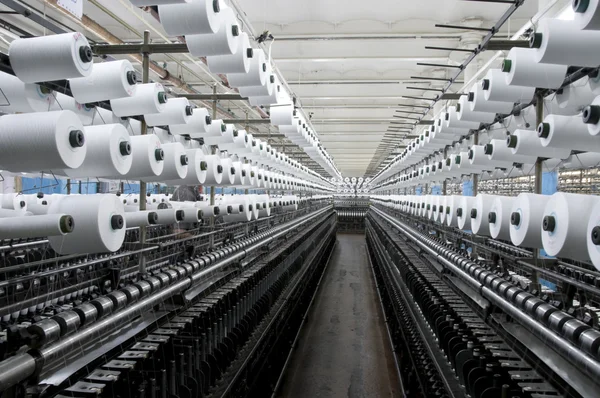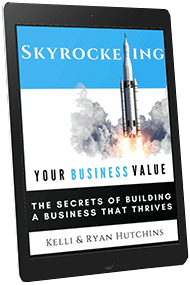
How to Value a Textile Mill
Textile mills produce textile products by spinning yarn from various fibers. According to IBIS World, there are over 12,600 textile mills in the United States. Together, these businesses generate over $8 billion per year. In the coming years, we can expect healthy growth for the textile mill industry. As such, now may be an ideal time to buy, grow, or sell a textile mill. Whether you are looking to buy, grow, or sell a textile mill, it is beneficial to learn how to value a textile mill.
To learn how to value a textile mill, it is best to obtain a business valuation. During a business valuation, a valuation expert will highlight the strengths and weaknesses of a textile mill you are buying or selling. In addition, you will learn the fair market value of a textile mill. With this information, you can begin to maximize the value of a textile mill.
As a professional business appraiser, Peak Business Valuation is happy to help! At Peak, we value textile mills throughout the country. As such, we are happy to provide you with a business valuation for a textile mill. Additionally, Peak can discuss any questions you may have on how to value a textile mill. Schedule a free consultation with Peak Business Valuation below!
How to Value a Textile Mill
Business appraisers consider several common business valuation approaches when valuing a textile mill. At Peak, our business appraisers often rely on the market approach and/or the income approach. Both of these methods are effective, however, each uses a different basis of valuation. As such, a valuation analyst will determine which method is best for your textile mill during a business appraisal. This often includes utilizing a combination of business valuation approaches.
Valuing a Textile Mill Using the Market Approach
The market approach is very common when valuing a textile mill. To understand this method, consider the real estate appraisal process. When valuing a home, real estate appraisers look at similar properties that recently sold in the area. This helps them calculate a fair value for the home. Similarly, business appraisers assess similar businesses when valuing a textile mill. If the textile mill is private, business appraisers refer to private transaction databases to gather relevant information.
Multiples for a Textile Mill
When working with the market approach, valuation analysts utilize valuation multiples. These are financial ratios that measure the value of a textile mill based on metrics such as cash flow, earnings, and sales. To find the appropriate valuation multiples for a textile mill, business appraisers apply the proper NAICS or SIC code. The following section discusses SDE, EBITDA, and REV multiples for a textile mill.
SDE (Seller’s Discretionary Earnings) Multiples for a Textile Mill
- The SDE multiple is common when valuing a textile mill. This multiple measures a textile mill’s value based on its seller’s discretionary earnings.
EBITDA Multiples for a Textile Mill
- EBITDA multiples measure a textile mill’s earnings before interest, taxes, depreciation, and amortization. This indicates the return on investment (ROI) a textile mill can generate.
REVENUE or SALES Multiples for a Textile Mill
- REVENUE or SALES multiples measure the value of a textile mill in relation to the total amount of revenue it generates.
To learn more on how to value a textile mill using the market approach, see Valuation Multiples for a Textile Business.
Valuing a Textile Mill Using the Income Approach
The income approach is another common business valuation approach. When using the income approach, valuation experts assess a textile mill’s income potential. In addition, the income approach considers the risks associated with buying, growing, or selling a textile mill. Below, we highlight a few common risks in the textile mill industry.
-
- Financial Performance: Financial conditions can fluctuate frequently in the textile mill industry. As such, it is vital for these businesses to have strong financial planning and budgeting skills.
- Machinery and Equipment: Textile mills require a variety of machinery and equipment to produce textile products. It is important to acquire high-quality textile mill machinery and equipment. When valuing a textile mill, you may also need an equipment appraisal.
- Competition: The textile mill industry is extremely fragmented and competitive. As such, textile mill operators need to differentiate from competitors.
- Location: The location of a textile mill plays a vital role in its success. It is best for textile mills to locate near key markets such as home furnishing markets and apparel manufacturers.
Methods to Value a Textile Mill Using the Income Approach
Under the income approach, there are various ways to value a textile mill. The most common methods are the capitalization of cash flow method and/or the discounted cash flow method. These methods analyze the earning potential of a textile mill. In the following paragraphs, we discuss how to value a textile mill using the capitalization of cash flow method and/or the discounted cash flow method.
Capitalization of Cash Flow Method
The capitalization of cash flow method is ideal if your textile mill has a long and stable history. When using this method, valuation experts determine an appropriate amount of earnings for one period. The earnings are then divided by a capitalization rate which indicates the rate of return investors can expect. Additionally, the capitalization of cash flow method assesses any risks associated with buying or selling a textile mill. We highlight a few of these risks above.
Discounted Cash Flow Method
The discounted cash flow method is best for textile mills with strong financial histories and/or predictable forecasts. This income approach involves projecting future cash flows over a 3-5-year period. Then, valuation analysts apply a discount rate rather than a capitalization rate to take the time value of money into account. Please note, that the discounted cash flow method is less common since it relies on future cash flow estimates which can be subjective.
Summary
Whether you are buying, expanding, or selling a textile mill, it is helpful to understand how to value a textile mill. The most common business valuation methods for valuing a textile mill are the market approach and the income approach. To learn which method is best for your textile mill, receive a business valuation. During a business valuation, a valuation expert will also calculate the value of a textile mill. A business appraisal also identifies the associated risks and opportunities. This information can help you take the next steps in increasing the value of a textile mill.
Peak Business Valuation, business appraiser, values textile mills on a regular basis. We are happy to provide you with a business valuation for a textile mill! In addition, Peak can answer any questions you may have on valuing a textile mill. Start now by scheduling a free consultation with Peak Business Valuation, below!
For more information see Valuing a Textile Mill, Value Drivers for a Textile Mill, and Valuation Multiples for a Textile Business.
